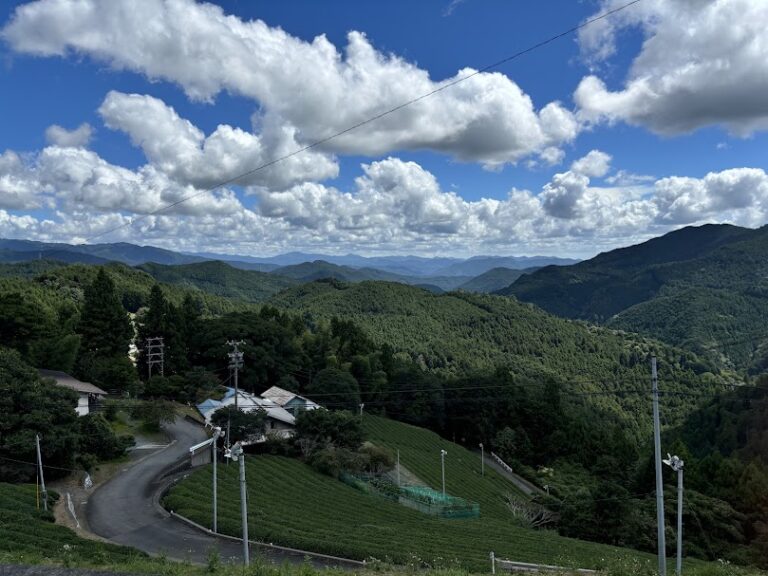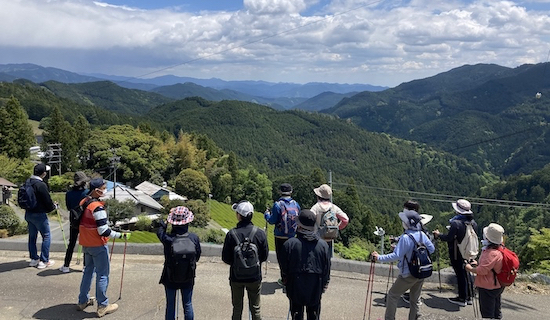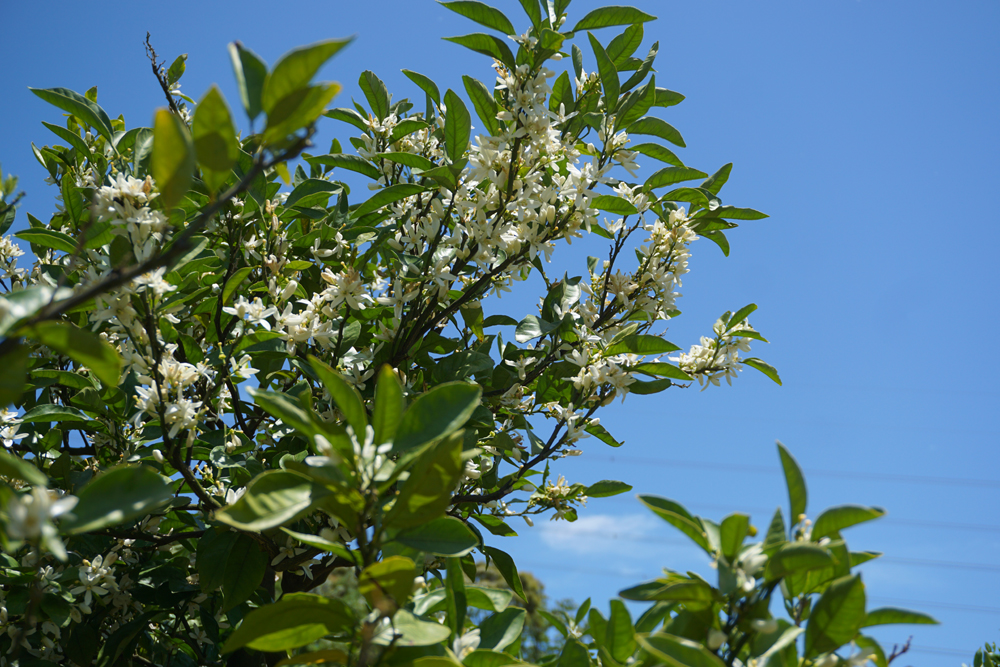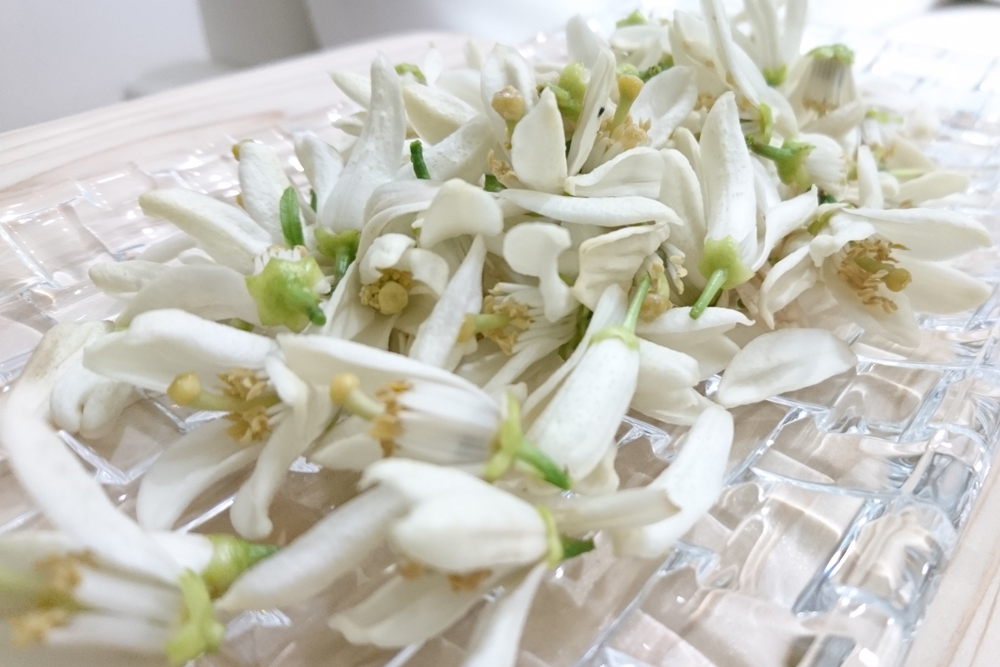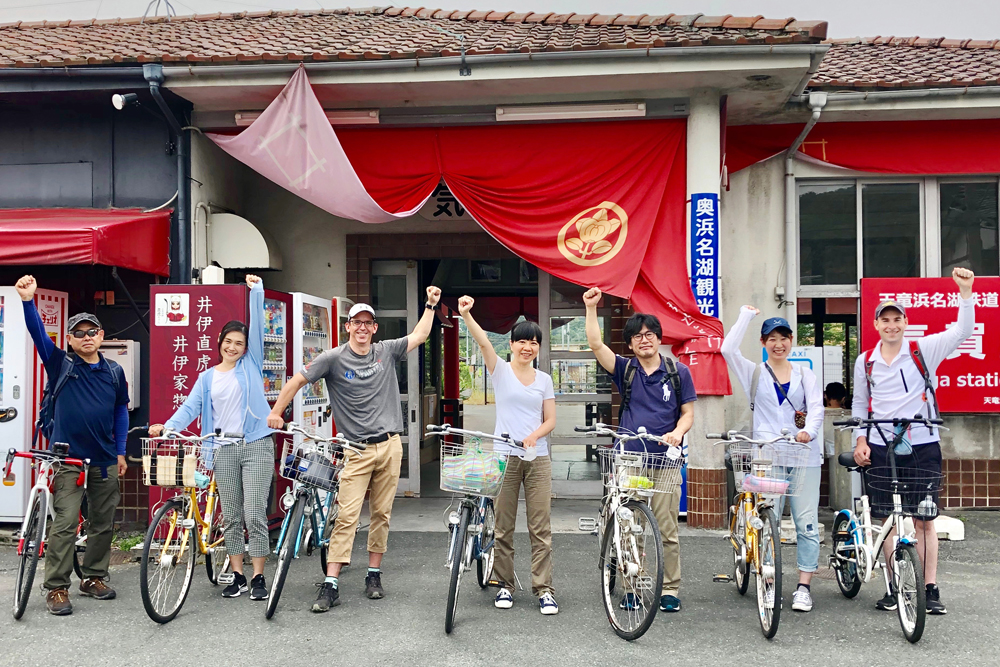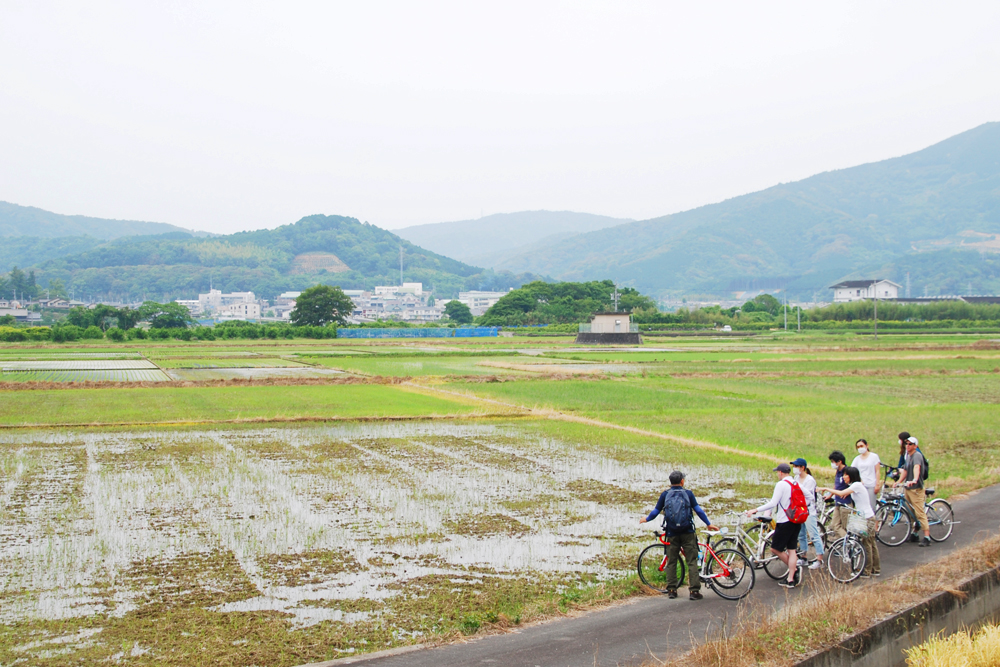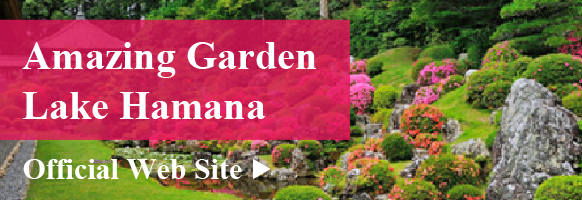Get to Know Hamamatsu
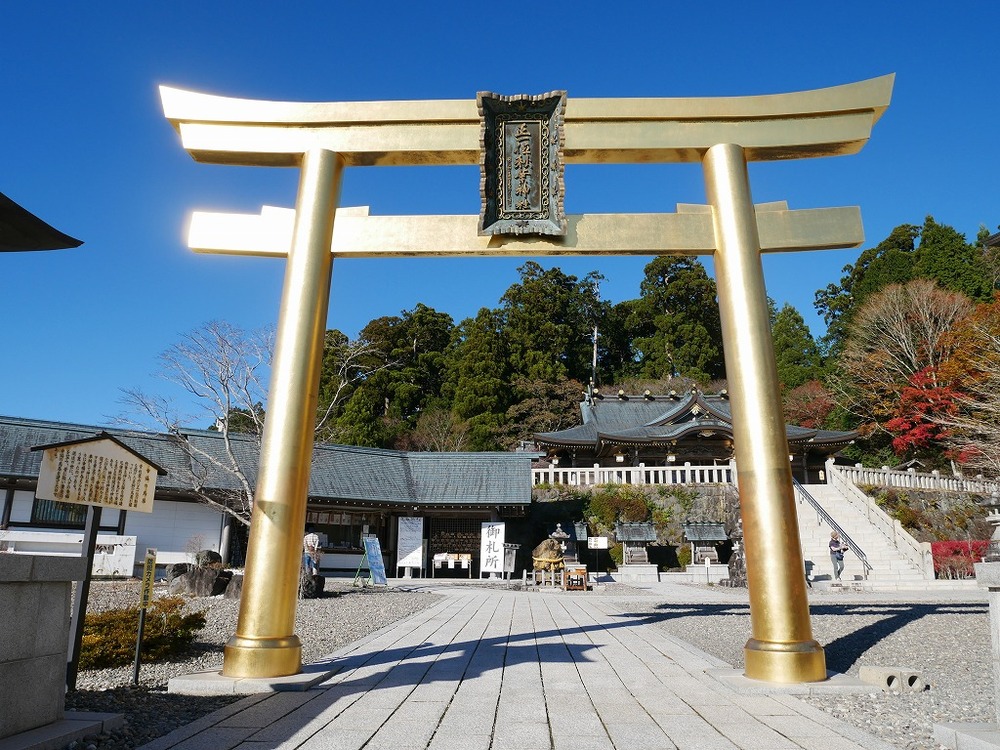
- Watch
Aim for the torii gate of happiness shining in the sky! Visit Akihabara Main Shrine and Akiba Shrine (Upper)
Tenryu Ward, Hamamatsu City. Akiba Sohongu Akiba Shrine (hereinafter referred to as Akiba Shrine), which is enshrined on the summit of Mt. Akiba at an altitude of 866 meters and enshrines the god of fire protection, is the main shrine of Akiba Shrines that are enshrined all over the country.
Purifying the fire, the Tengu plate-throwing, the giant flint “Kamieiwa” and the Goshuin seal, the golden “Torii of Happiness” and the main shrine… and the Shinto gate that will be revived in May 2023!
This time, we will introduce you to the charm of Akiba Shrine Kamisha with more pictures than usual.
The main shrine of Akiba Shrines nationwide is here! Akihabara Hongu Akiba Shrine
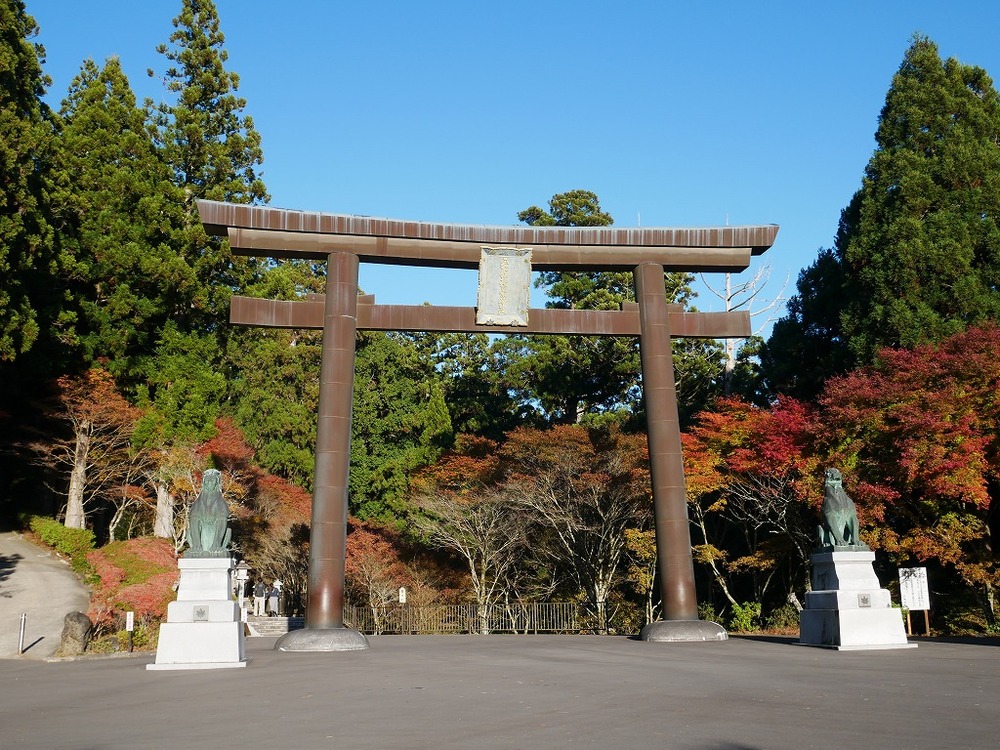
*View of Otorii from Akiba Shrine Kamisha parking lot
Akihabara Sohongu Akiba Shrine Kamisha, with its glittering golden torii gate, is about 33 kilometers north-northeast from JR Hamamatsu Station. It is located on the summit of Mt. Akiba in Haruno-cho, Tenryu-ku.
It was founded in 709, at the end of the Asuka period.
The enshrined deity is the presiding deity of fire, the god of fire, Hinokaguchi Omikami, and the god of the married couple (Izanagi and Izanami)who appears in Japanese mythology and is responsible for the birth of nations and gods.
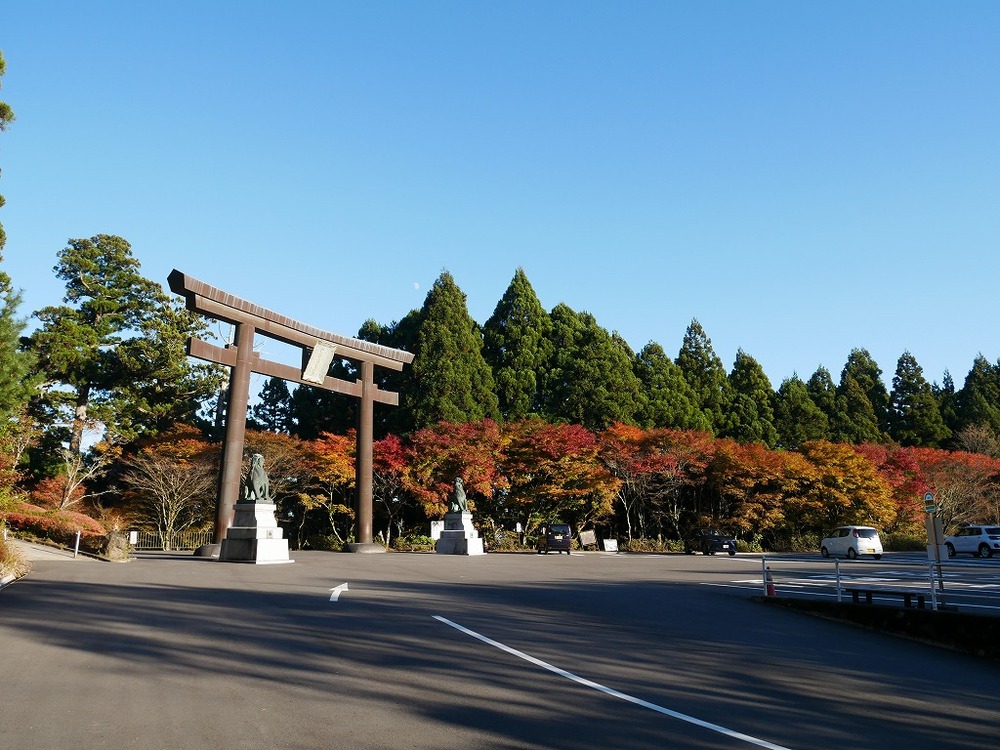
*Kamisha parking lot
There are two main ways to access Akiba Shrine: by foot or by car.
If you are walking, it will take an adult about 1.5 to 2 hours each way from the lower shrine of Akiba Shrine to the upper shrine at the foot of the mountain. Omotesando is part of the Tokai Nature Trail.
If you are driving, please park at the parking lot near the shrine building, then walk up the stone steps. The parking lot is spacious and can accommodate over 300 regular cars and 20 large cars. The toilet is located at the back right as you face from the Otorii gate.
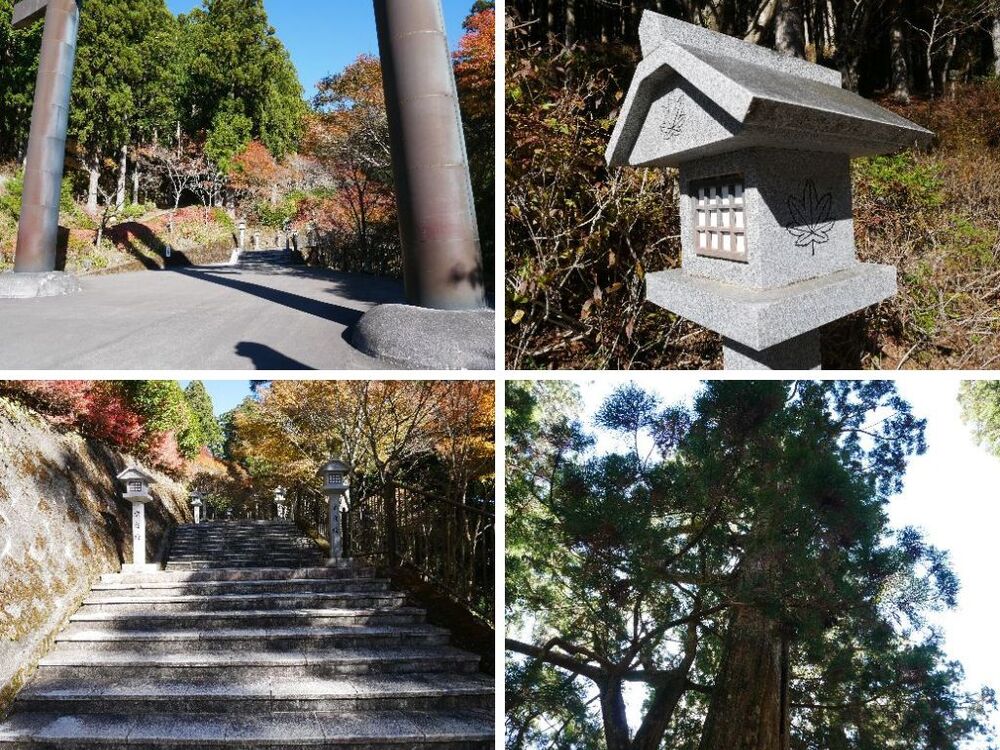
*Top left: The approach that extends beyond the Otorii, Top right: Seven-leaf maple with the divine crest engraved on the stone lantern, Bottom left: Concrete stone steps, Bottom right: Akiba cedar
On both sides of the approach leading from the Otorii to the main shrine, there are stone lanterns engraved with Akiba Shrine’s divine emblem, the seven-leaf maple.
Along the approach to the shrine, there are information boards about “wildflowers that can be seen within the grounds of Mt. Akiba” such as katakuri (Japanese katakuri), Japanese cypress, and silver lily, as well as “Akiba cedar,” a large cedar tree that is sacred to the shrine.
Some Akiba cedars that were planted and cultivated in the mid-Muromachi period still remain.
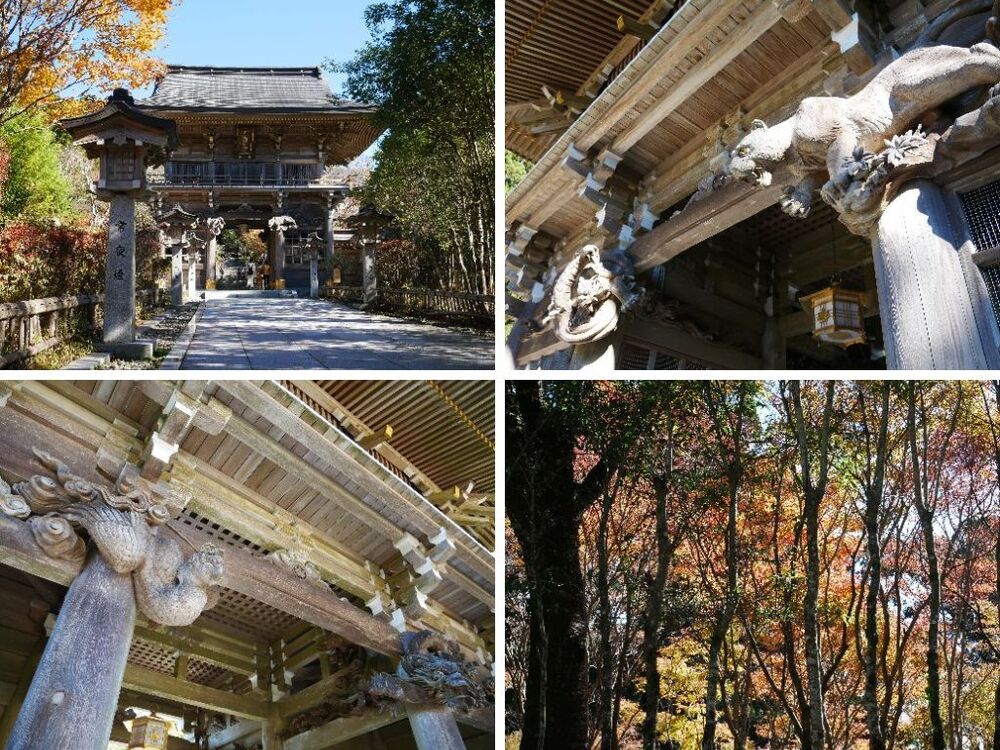
*Top left: Nishinokadomori Shrine Gate, completed in 2005 as part of the 1,300th anniversary of the enshrinement, Top right: Byakko and Genbu, Bottom left: Suzaku and Seiryu, Bottom right: Cedar grove
In front of the main shrine, there are shrine gates on the east and west sides of the approach.
It takes about 10 minutes to walk slowly from the parking lot to the Shinto gate of Kadomori, which stands on the west side.
A nin is a gatekeeper. Its role is to convey worshipers to the gods enshrined at Akiba Shrine.
The four corners of the shrine gate are decorated with the four gods of Seiryu, Suzaku, Genbu, and Byakko. Pay attention to the shimmering eyes of the four gods!
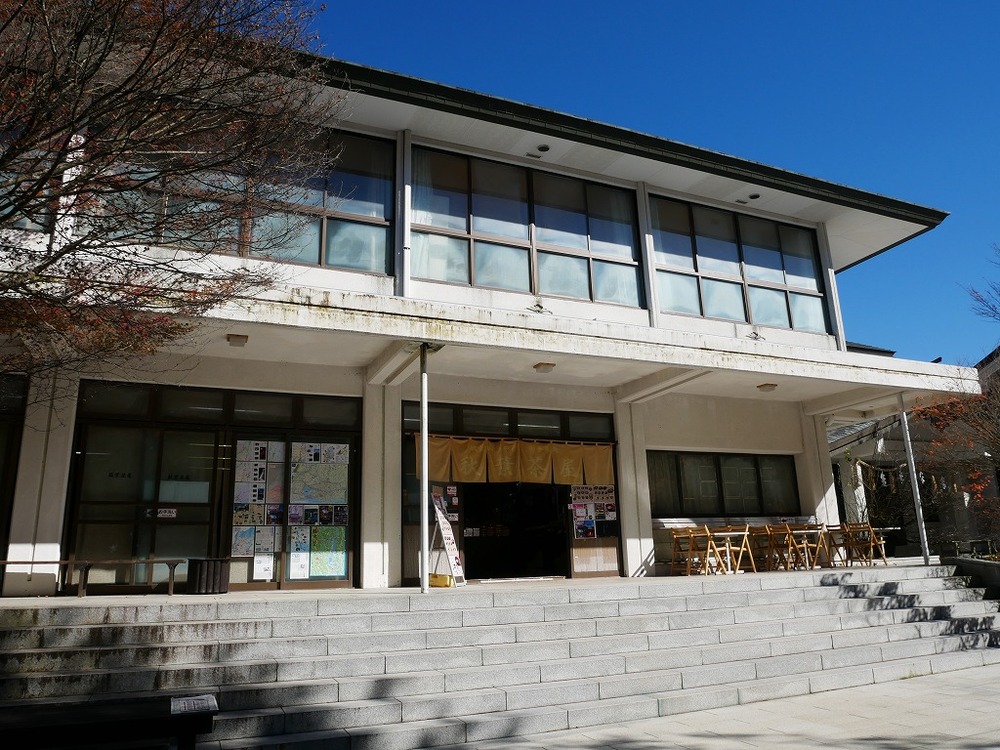
*Akiba Chaya
If you would like to take a break before or after visiting the shrine, please visit Akiba Chaya.
In addition to being used for meals and tea time, the store also sells souvenirs from Akibayama.
The most popular dish on the menu, “Big Shiitake Tenju,” is filled with large shiitake mushrooms grown locally in Enshu!
The shiitake mushrooms used in the simmered dishes and tempura of Nadai Soba and Nadai Udon are log shiitake mushrooms, which are rare these days.
*The provision of “Oshiitake Tenju” will be temporarily suspended from December 15, 2023 to January 10, 2024.
If you’ve come this far, it’s almost time to go to the shrine.
Purification with a cut fire and Tengu plate throwing will be held in front of the shrine office.
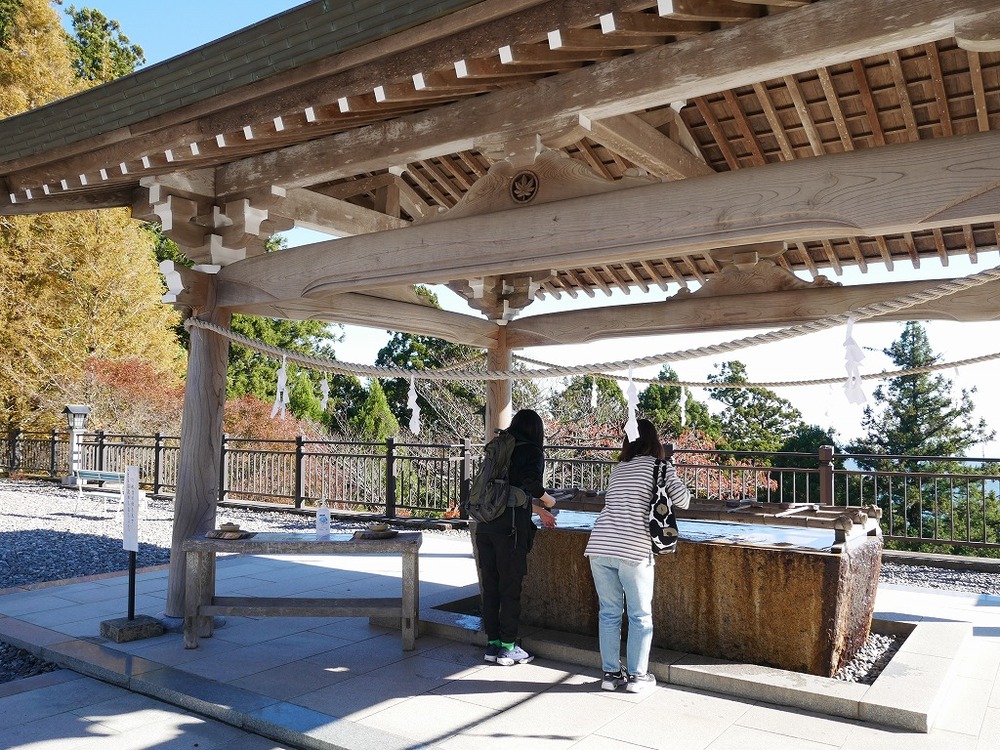
*A spacious, open-air chozuya
Before visiting the shrine, cleanse your body at the chozuya.
Similar to the lower shrine, it is possible to purify the upper shrine with a fire.
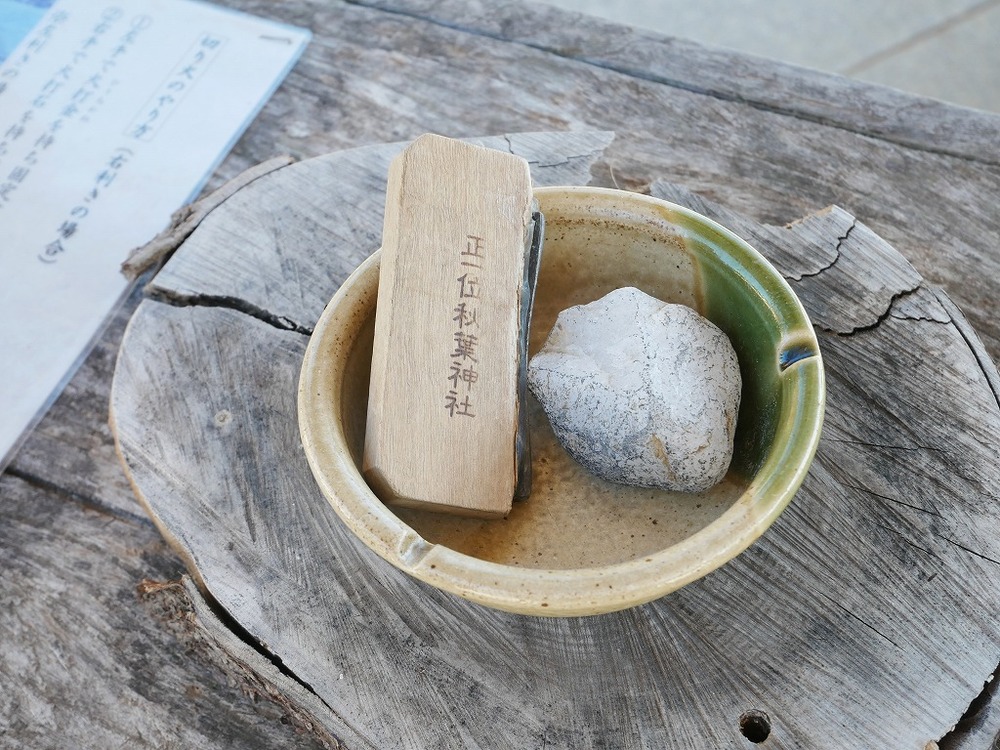
*Kamisha’s Kiribi set (flint on the left, flint on the right)
The flint metal hichigane and flint stone needed for cutting the fire are installed on the left side of the Chozuya.
It’s okay if you don’t know how to cut a fire. Please cleanse while looking at the instructions with pictures on the table.
For those of you who started the fire at about the same time as me, click! Click! When the flint and flint were rubbed together, small sparks flew from the flint.
*Please be careful not to ignite the clothing you are wearing when setting fires.
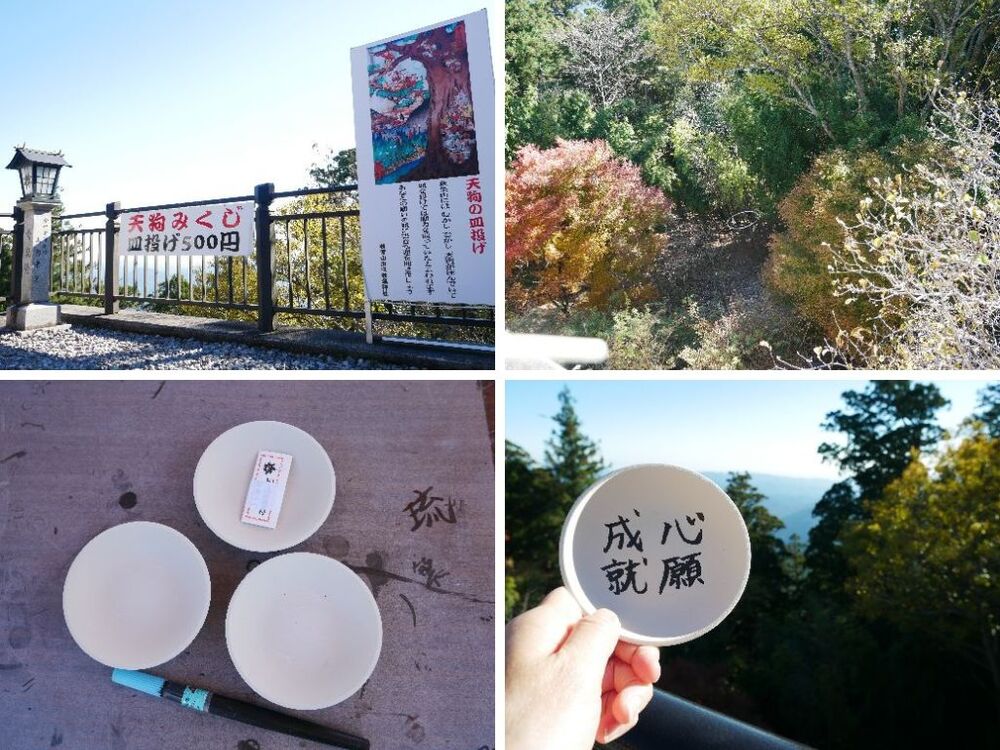
*Top left: Tengu’s plate toss starts from this place, Top right: Throw it through the white ring in the center, Bottom left: Small plate and fortune, Bottom right: The author also tried it!
The “Tengu Plate Throw”, which is popular when visiting Akiba Shrine’s Kamisha Shrine, is located near the Chozuya.
It is said that your wish will come true if you write a wish on a small plate and throw it towards a ring set at the bottom of the cliff.If the plate passes through the ring, your wish will come true.
The first gift fee is 500 yen for 3 small plates on which you can write your wishes and 1 Tengu fortune (omikuji). If you are interested, please give it a try!
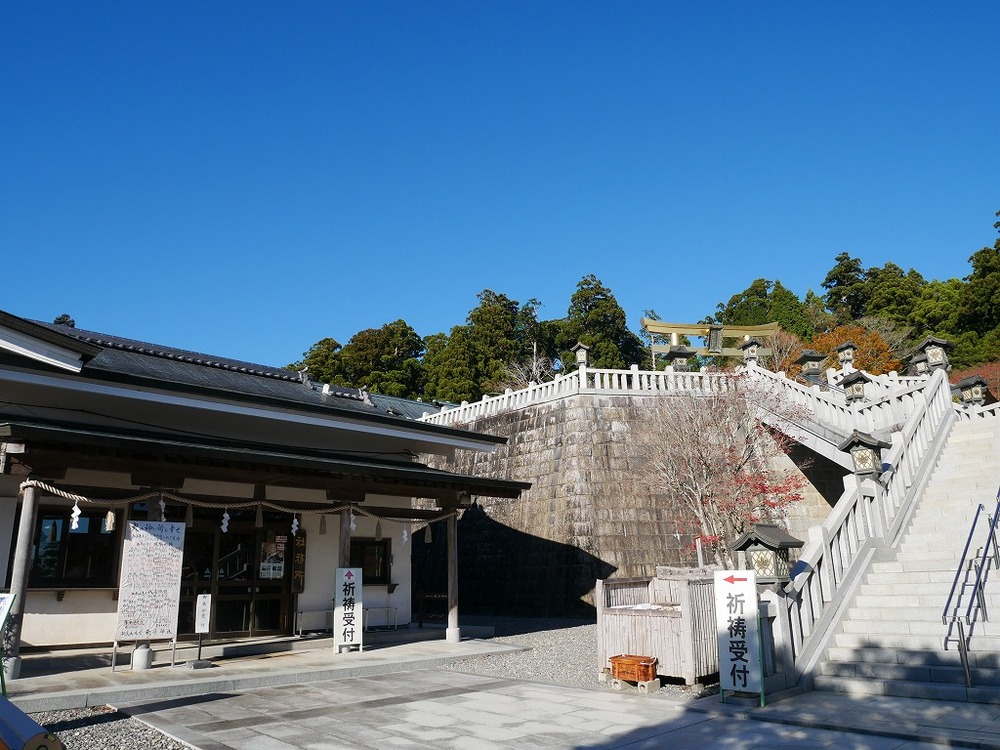
*The office is the building on the left
Amulet charms and hamayumi from the Kamisha of Akiba Shrine are given out at three locations: the shrine office, the one opposite the shrine office, and the amulet located beyond the torii gate of happiness.
Of the three locations, the shrine office is the only one that awards goshuin stamps.
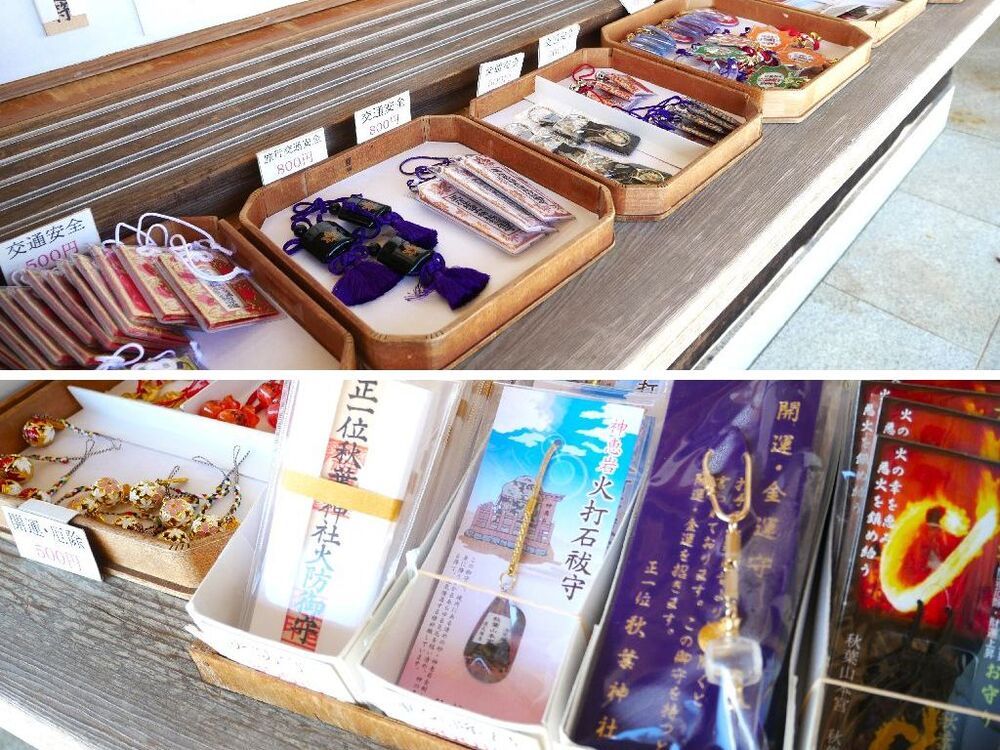
*Top: Traffic safety amulets lined up at the amulet, bottom: Amulets lined up at the amulet (fire protection charm, Kamieiwa flint purification charm, etc.)
There are many amulets and lucky charms such as traffic safety, good luck charms (Nishikimamori), devil bows, etc. lined up at the three amulet awarding places.
The fire protection guard is unique to Akiba Shrine, which enshrines the god of fire protection! The flint stone purification guardian of Kamieiwa Shinkeigan is also popular.
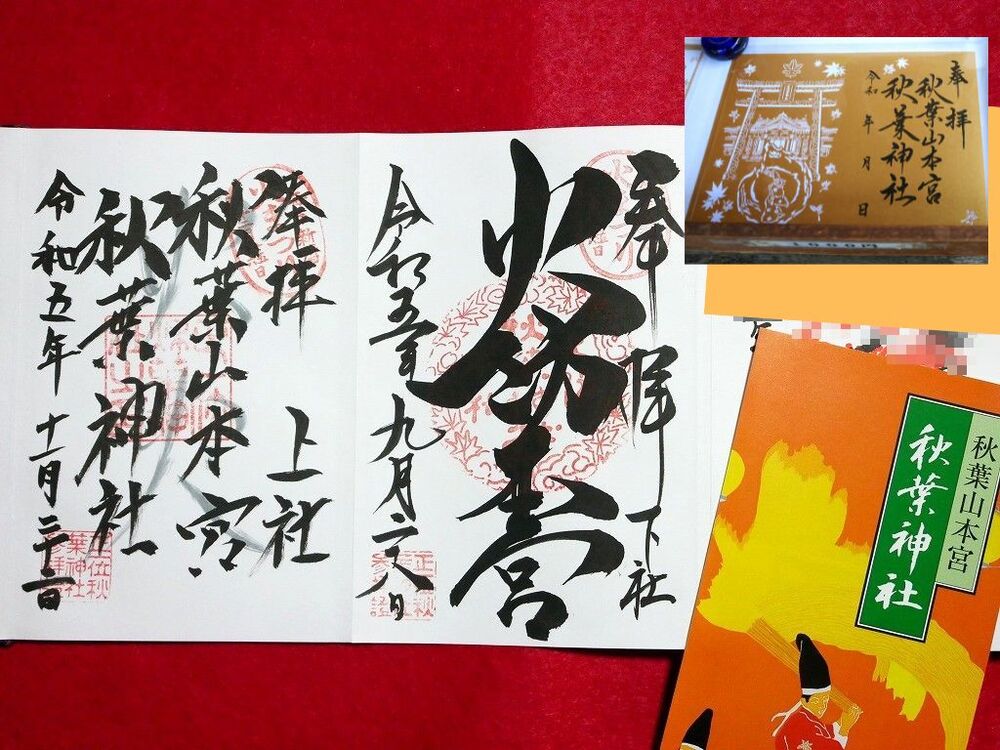
*Upper right: cut-out goshuin, center: goshuin of the upper shrine (left side of the goshuin book) and lower shrine (right side of the goshuin book)
There are two types of Goshuin stamps at Akiba Shrine: the regular type with ink writing, and the cut-out Goshuin stamps with gold mounts.
The ink-written type of goshuin is different for upper and lower shrines, so some people write on the left and right sides of the goshuin book, respectively.
When the author heard this, he wrote them side by side on the left and right sides of the goshuin book.
The paper-cut goshuin, which uses a golden mount, is common to both Kamisha and Shimosha. You can enter the date of your visit at the shrine office.
Laminate it and display it, or paste it on the spread of a goshuin book. Every time you open your goshuin book, you can remember what it was like when you visited the shrine.
Pass through the golden torii gate in the sky, "Torii of Happiness,'' and visit the shrine!

*The golden torii gate of happiness
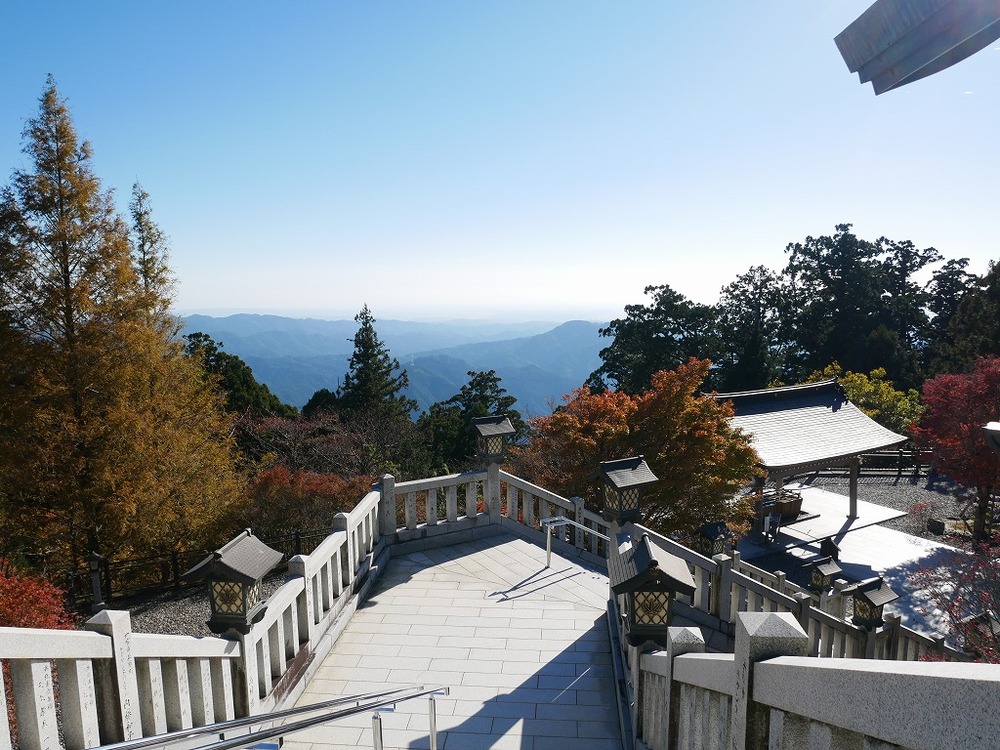
*Looking down from the Torii of Happiness
The golden torii gate, which makes you feel happy just by looking at it, is located at the top of the stairs between the shrine office and the chozuya.
It was named “Torii of Happiness” because it was built with the hope of bringing happiness to people.
The golden torii gate, which stands out against the blue sky, is gorgeous and majestic.
What you can see below are the deep green mountains of Tenryu.
It’s no wonder that the torii gate is called “the golden torii gate in the sky.”
A golden grass ring is installed at this torii gate for worshipers to pass through in June (the great purification ceremony that lasts the summer) and from December to January.
Please take the time to visit the shrine!
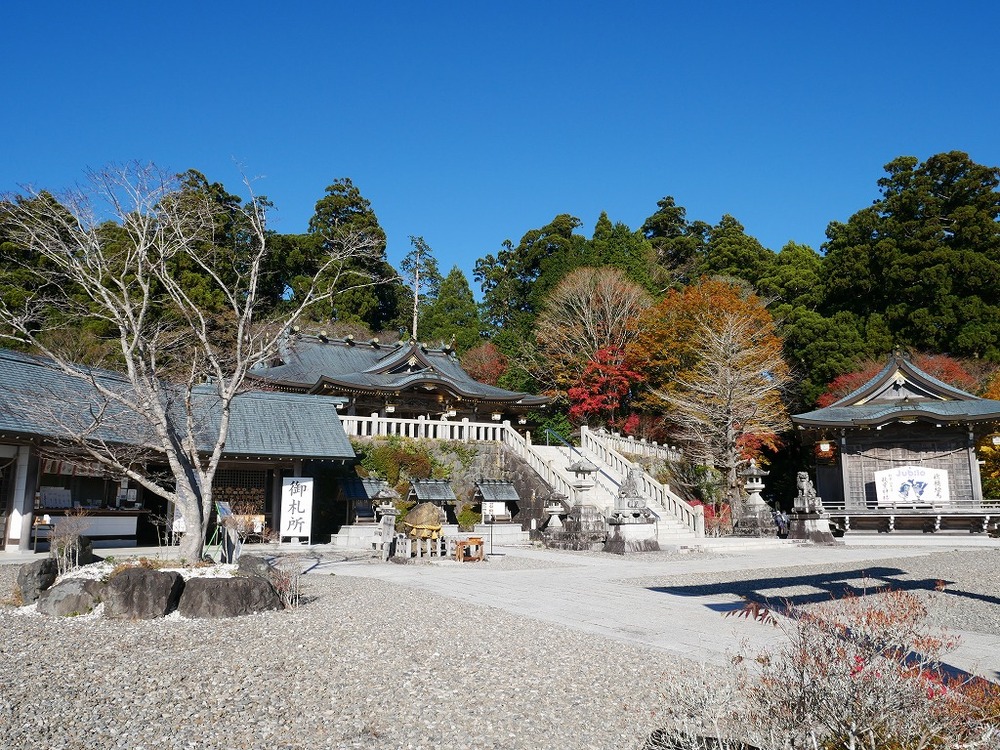
*From the left: the amulet, Kamieiwa rock, the stairs to the main shrine, and the Kagura hall.
When you pass through the torii gate, you will see Kamieiwa Rock in front of you, the amulet on the left, and the Kagura Hall on the right.
The stairs to the main shrine are located between Kamieiwa Rock and Kaguraden.
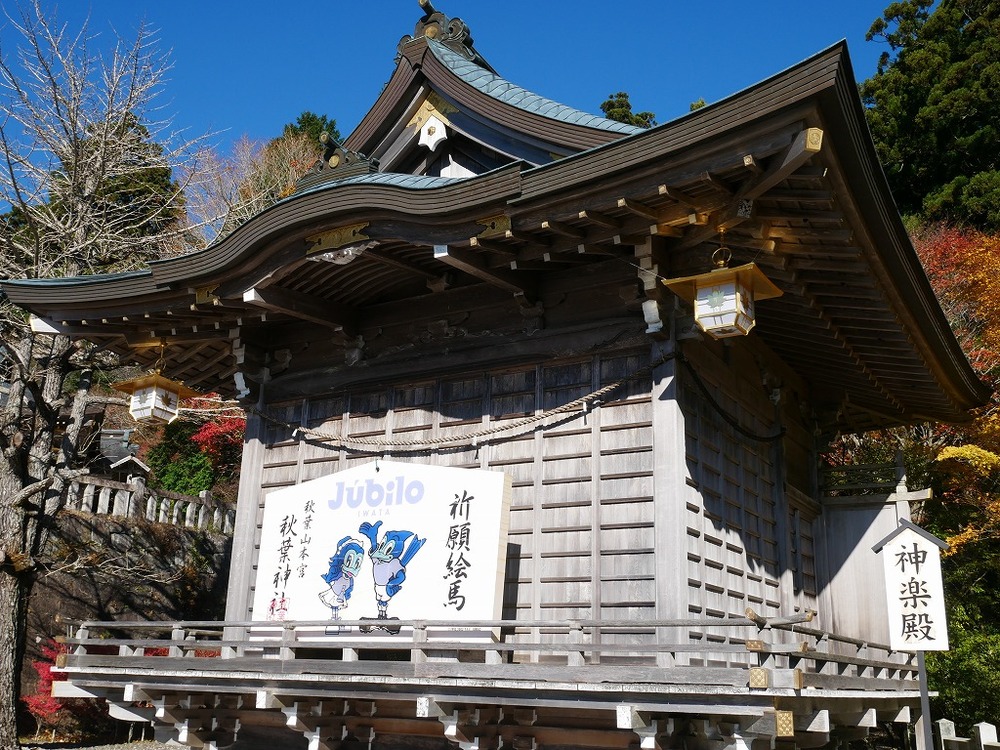
*Jubilo Iwata’s wishing votive tablets are dedicated to the Kagura Hall.
The large ema hung in the Kagura Hall is a prayer for the professional soccer club Jubilo Iwata to win.
The votive tablet in the image was dedicated to the team in hopes of returning to J1 in January 2023.
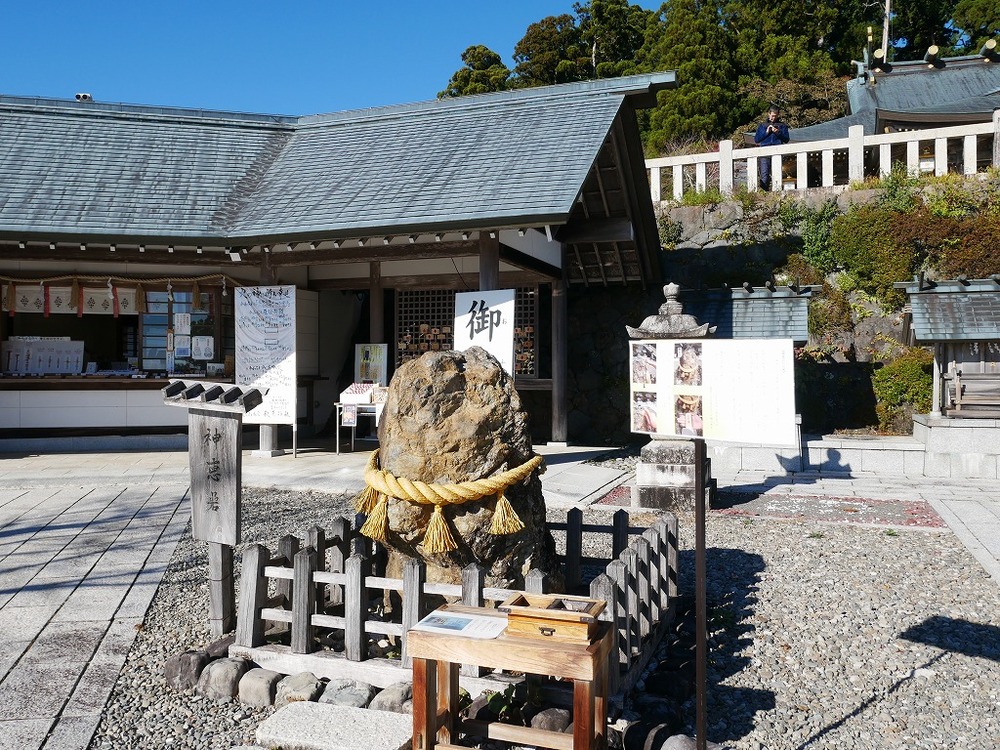
*Kamieiwa
Some people may wonder, “It was used as a talisman, but what is Kamieiwa?”
Kamieiwa is a gigantic flint that was mined from the mountains of the Akiba mountain range and dedicated to it. Yes, this entire rock is flint.
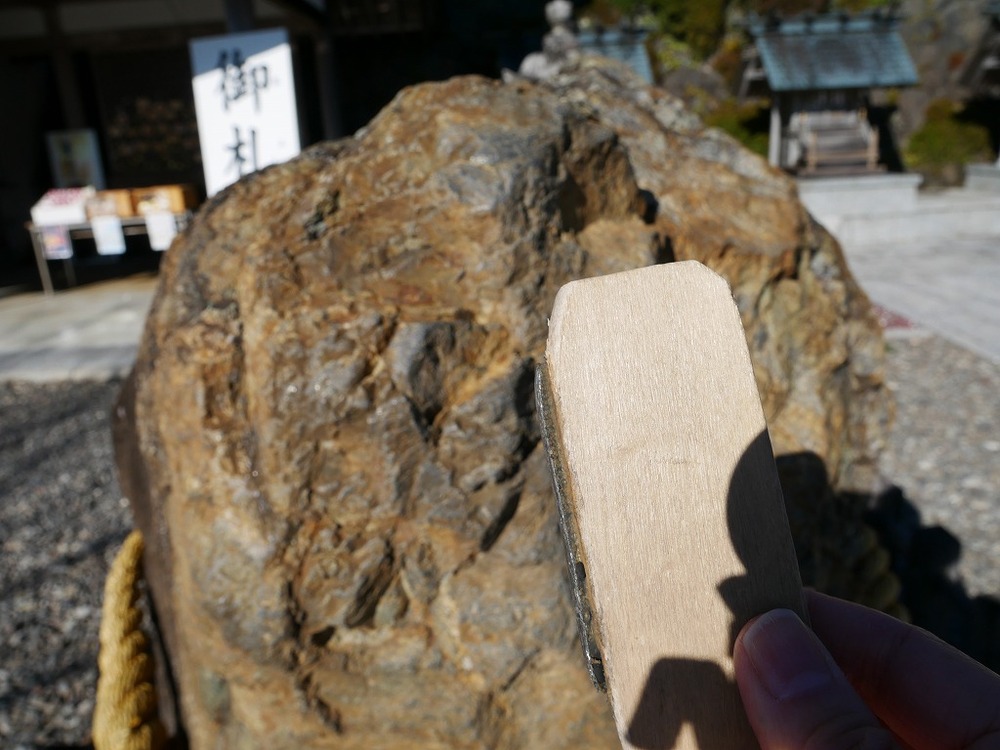
*Kamieiwa flint
The procedure for cutting fire is almost the same as cutting fire at Chozuya.
Once you have a flint metal, strike it two or three times, and the sparks will pop and fly away.
Why not light a fire at Kamieiwa Rock and pray for protection against evil spirits, purification, and fulfillment of your dreams?
Pray for fire protection from the main shrine located at the summit of Mt. Akiba
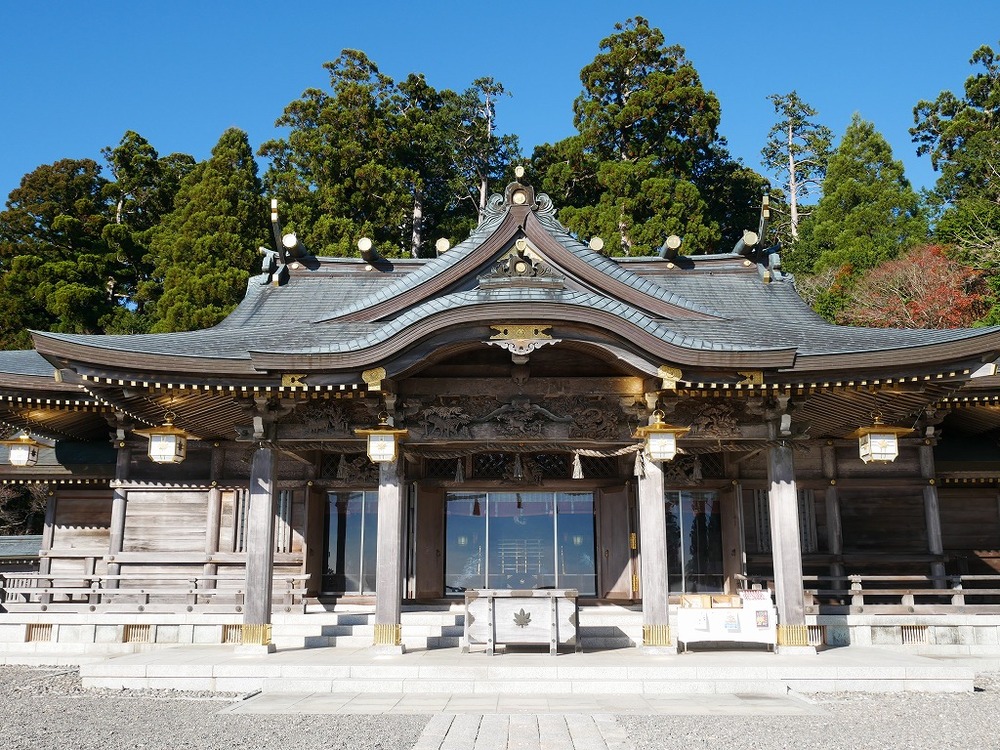
*Akiba Shrine Main Hall
The object of worship at Akiba Shrine was relocated to the foot of Mt. Akiba due to a forest fire that occurred in 1943 (Showa 18).
The new location is the current Shimosha.
After several decades, the main shrine was rebuilt in 1986 (Showa 61).
After the reconstruction, the main hall is made entirely of cypress, and the front of the hall has a karahafu roof (a roof that extends over the stairs in front of the main hall).
From the main hall, which stands behind the sacred area at the top of Mt. Akiba, you can feel the dignity and solemnity in the silence.
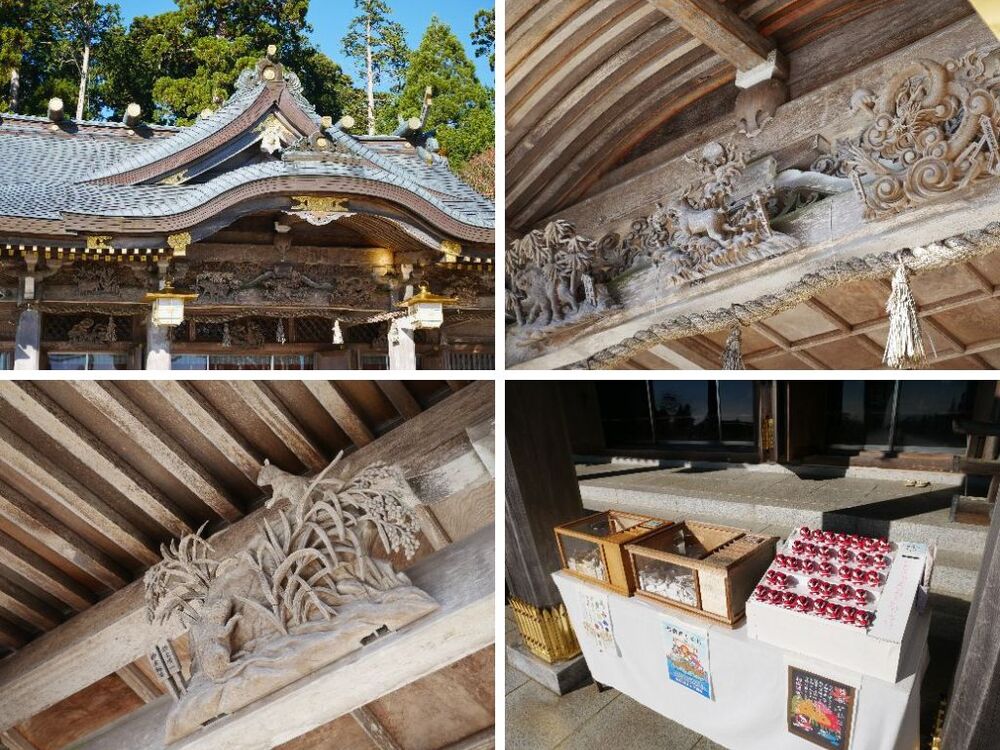
*Top left: Main shrine of Akiba Shrine, Top right: Zodiac carvings on the offering box, Bottom left: Zodiac carvings on the offering box, Bottom right: From left: Golden fortune, Seven Lucky Gods fortune, Tengu-sama fortune
There are carvings of the zodiac around the shrine.
The carvings directly above the offering box are the zodiac signs of that year, and the carvings change to the following year’s zodiac signs every year in early December. The zodiac carvings are panel-style, so they can be replaced one after the other.
On the left side of the offering box, there are several types of fortune.
The most eye-catching Tengu-sama fortune slip is related to the Tengu that is said to have lived in Mt. Akiba long ago.
After drawing your fortune, please use it as an amulet for good luck and warding off evil spirits.
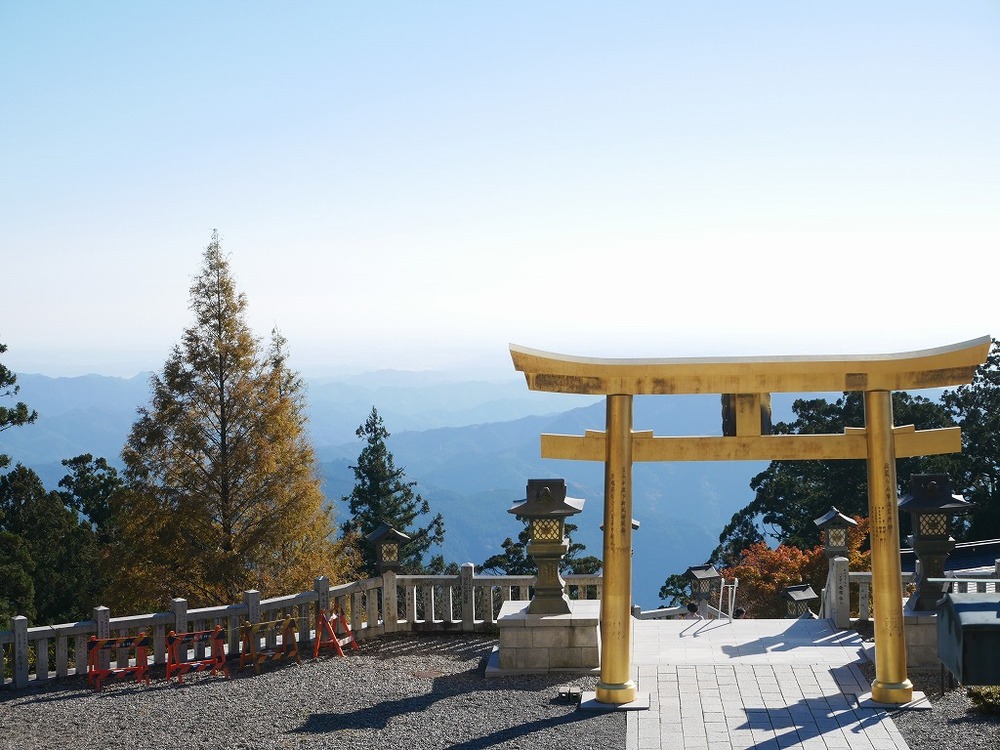
*View of the Torii of Happiness from near the main shrine
The main shrine of Akiba Shrine is located on a higher ground than the Torii of Happiness, so the view is spectacular!
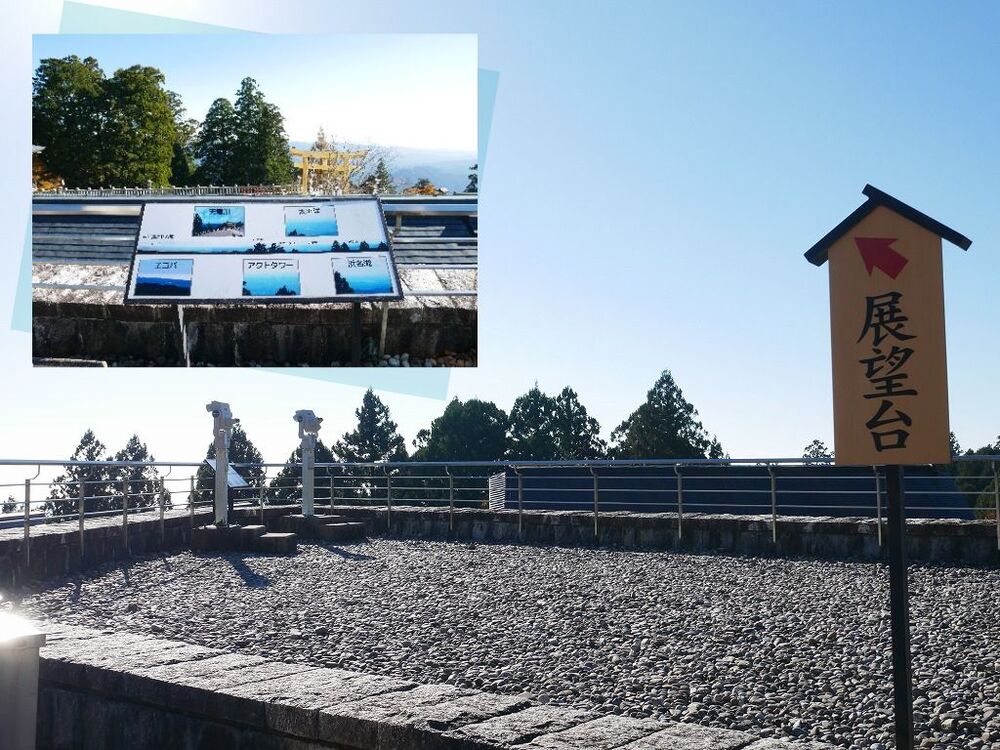
*The scenery seen from the observation deck (upper left) and the observation deck
From the observation deck, you can see the Tenryu River flowing through the city, Act Tower near JR Hamamatsu Station, and Fukuroi City’s Ecopa.
The Pacific Ocean and Lake Hamana are far away!
The revived Shinto gate is now in Omotesando
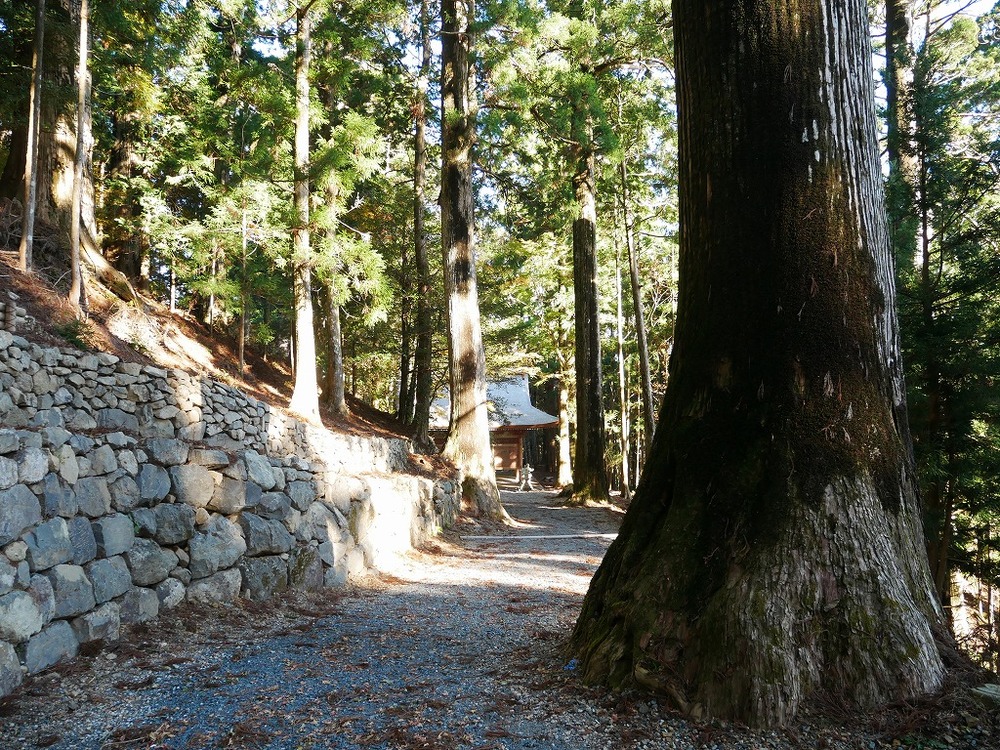
*The shrine gate visible from between the cedar trees
As mentioned above, there are shrine gates on the east and west sides of the approach to Akiba Shrine.
The approach to the east is Omotesando, which leads from the lower shrine, and this shrine gate is about 180 meters down from the shrine office.
As you descend the approach, the shrine gate gradually appears between the cedar trees.
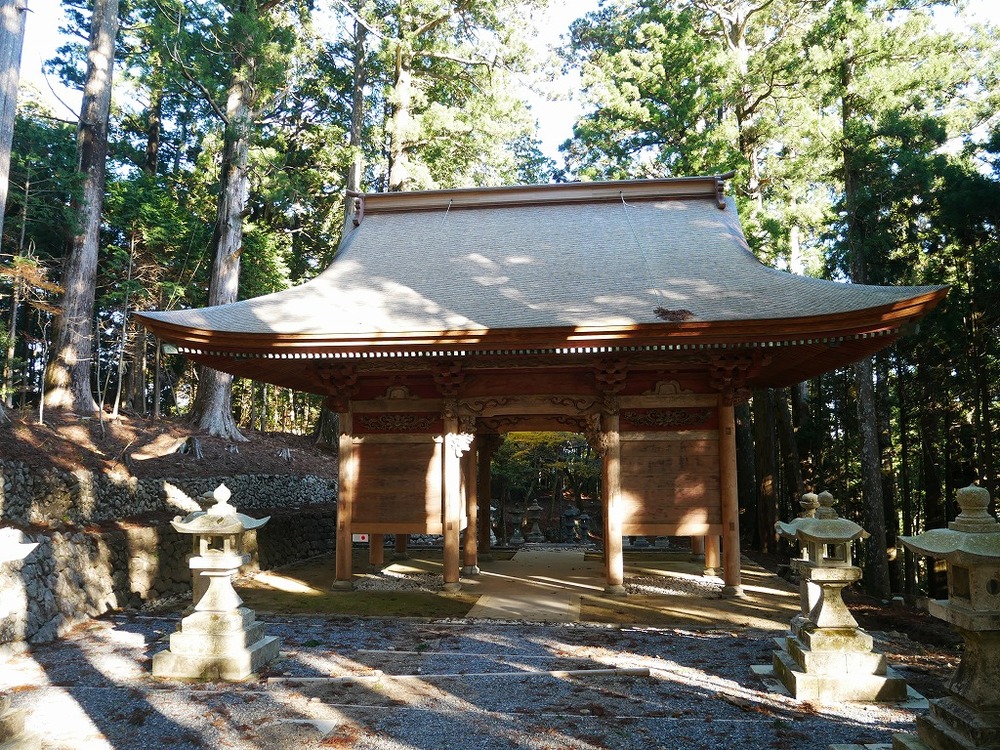
*Shinto gate seen from the shrine side
Some people may wonder, “Didn’t the gate of Akiba Shrine fall down in a typhoon a few years ago?”
That’s right. The gate of Akiba Shrine was severely damaged in October 2018 (Heisei 30) when a large fallen cedar tree directly hit the roof during Typhoon No. 24, which caused great damage in the Enshu region.
The badly damaged shrine gate was built by Tomimasa, the second generation of the Suwa Tachikawa school, during the late Edo period, from the Bunsei period to the Tenpo period.
After various discussions, it was decided that the shrine gate would be completely dismantled and repaired.
The moth-eaten parts of the pillars and sculptures were replaced with buried wood, and the missing parts were repaired with the same material as the main body, restoring it to its original appearance in the Tenpo period.
In May 2023, it was revived as it was in the past.
The shrine gate has a simple appearance like this when viewed from the shrine building side.
Now let’s go through the gate.
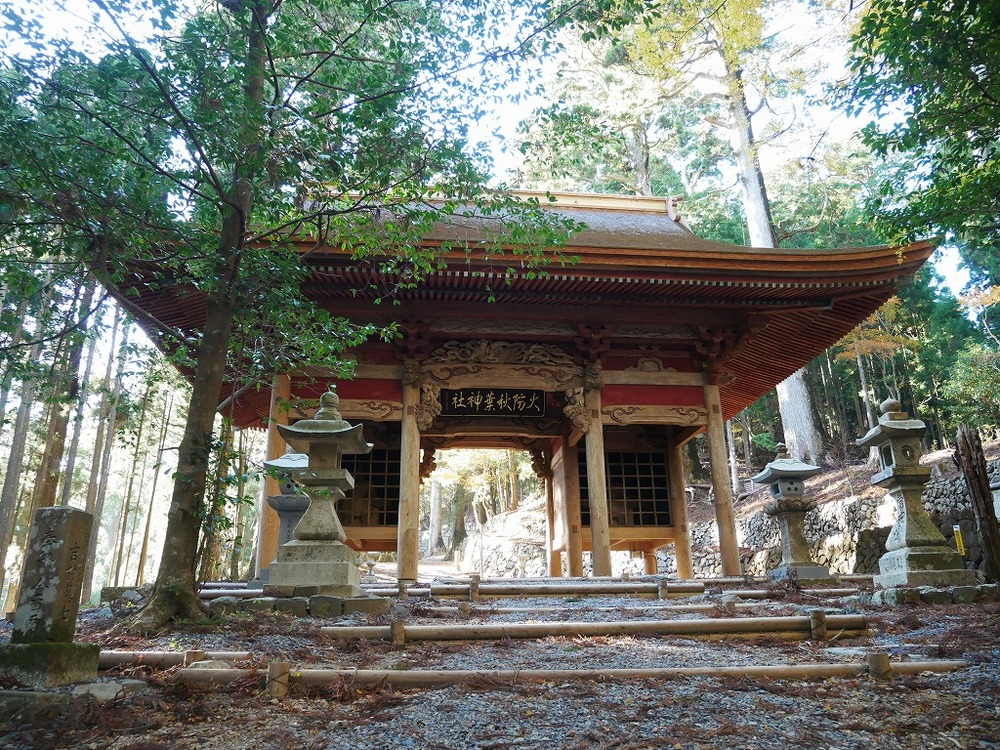
*Shinto gate seen from the bottom of the Omotesando stairs (Shimosha side)
On the lower shrine (Omotesando) side of the shrine gate, there are carvings on the beams and on the left and right sides. And in the center is the shrine plaque of “Fire Prevention Akiba Shrine.”
What must have been the thoughts of the pilgrims heading from the lower shrine to the upper shrine when they saw the shrine gate among the cedar trees and gradually approached it as they walked?
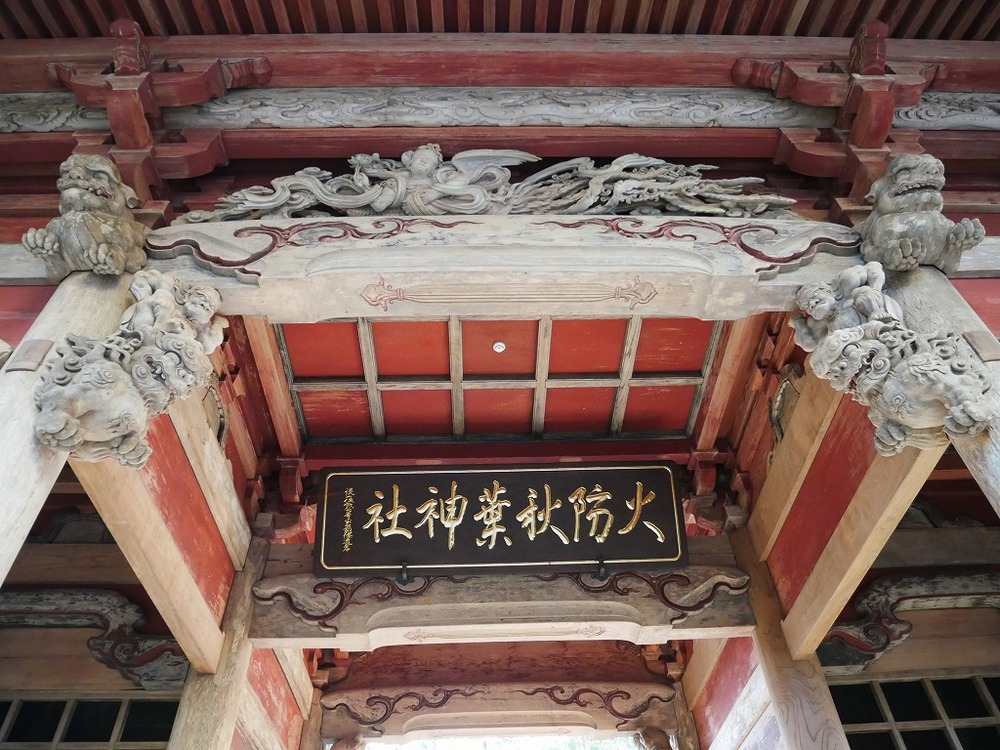
*The Karyobinga that dances on the beams is made of a single piece of Japanese cypress.
If you look up at the shrine gate from directly below, you will see a powerful man sitting on top of a lion, and on the beam supported by the powerful man stands a graceful Karyo Takagara. The carvings on the left and right sides of the beam are tigers.
Karyo Takka is an imaginary creature whose upper body resembles a celestial maiden and lower body resembles a phoenix. It is said to have a beautiful voice, and is sometimes called “Myooncho”.
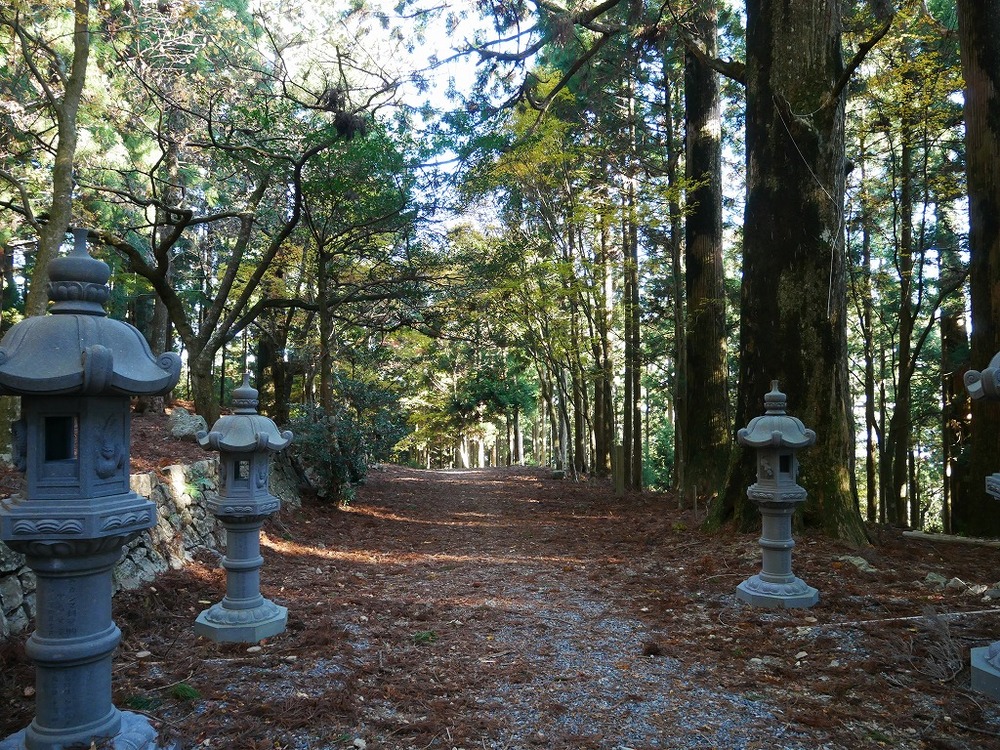
*View of Omotesando from the Shinto gate – Approximately 4km to Shimosha
The distance from Shinmon to Shimosha is approximately 4 km.
Pilgrims who reached the gate of Akiba Shrine may have taken a breather and looked back the way they came.
If you want to see the shrine gate but don’t want to walk 4km from the lower shrine, why not try walking down the approach from the upper shrine like I did?
If you would like to visit Kamisha by public transportation, please use the special bus that runs from Nishikashima Station to Akiba Shrine Kamisha during the New Year’s visit season from November to January of the following year.
<Special bus service dates in 2023>
<November> 5th (Sun), 12th (Sun), 19th (Sun), 26th (Sun)
<December> 3rd (Sun), 10th (Sun), 15th (Sun), 16th (Sun)
<January> 1st (Monday), 2nd (Tuesday), 3rd (Wednesday), 4th (Thursday), 5th (Friday), 7th (Sunday)
・Temporary bus schedule
<Outbound> 10:00 departure from Nishikashima Station bus stop ⇒ 《Each stop》 ⇒ Shandong ⇒ 《Direct》 ⇒ Akiba Shrine Kamisha
<Return> Akiba Shrine Kamisha bus stop 13:30 ⇒ 《Direct》 ⇒ Shandong ⇒ 《Each stop》 ⇒ Nishikashima Station
*Both round trips stop at each stop between “Nishikashima Station and Santo”
・One-way fare
Adults: 750 yen / Elementary school students: 380 yen
At the Kamisha of Akiba Shrine, you can purify yourself with a cut fire, throw a tengu plate, pass through the golden Torii of Happiness, light a fire at Kamieiwa Rock, and visit the main shrine. Awarding of amulets and goshuin. There are also plenty of things to see and experience, such as visiting the shrine gate!
Be sure to visit both Kamisha and Shimosha!
Akihabara Hongu Akiba Shrine official website (external link)
